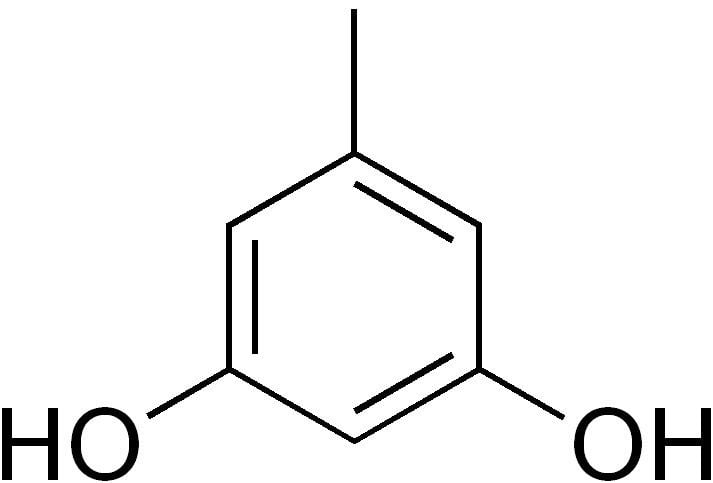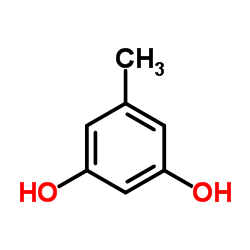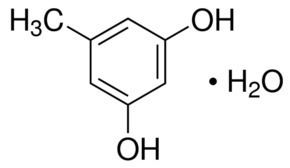Formula C7H8O2 Boiling point 290 °C | Molar mass 124.13 g/mol Appearance Crystalline | |
 | ||
Orcinol is a natural phenolic organic compound that occurs in many species of lichens including Roccella tinctoria and Lecanora. Orcinol has been detected in the "toxic glue" of the ant species Camponotus saundersi.

Chemistry
It can be formed by fusing extract of aloes with potash.

It is used in the production of the dye orcein and as a reagent in some chemical tests for pentoses, such as Bial's Test. It may be synthesized from toluene; more interesting is its production when acetone dicarboxylic ester is condensed with the aid of sodium. It crystallizes in colorless prisms with one molecule of water, which redden on exposure to air. Ferric chloride gives a bluish-violet coloration with the aqueous solution. Unlike resorcinol it does not give a fluorescein with phthalic anhydride. Oxidation of the ammoniacal solution gives orcein, C28H24N2O7, the chief constituent of the natural dye archil. Homo-pyrocatechin is an isomer (CH1: OH: OH= 1 3 :4), found as its methyl ether (creosol) in beech-wood tar.


